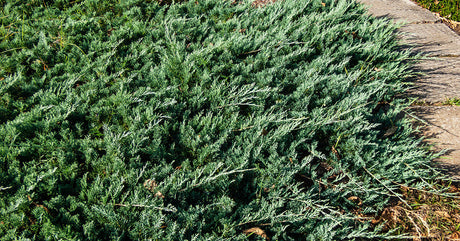

Properly Establishing Your New Potted Plants
|
|
Time to read 3 min

|
|
Time to read 3 min
Establishing your new potted plant from plantsbymail.com is crucial to its health and growth. The first step in establishing your plant in its new home is planting it. Here are some suggested steps that will help optimize the development of your new plants.
Find how much sun and water your plant requires on the attached tag. If the plant tag doesn’t provide that information, read up on the proper sunlight and water exposure for the variety of plants you have purchased. Pick a location in your yard that is aesthetically pleasing and well-suited to the plant.
If the plant needs lots of water, please ensure you can reach it with your hose. This step will save you time and effort in the long run.
Once you have identified your ideal location for your plant, dig a hole two times as big as the plant’s container. Providing ample space is essential so the roots can quickly grow into loosened soil surrounding the plant.
If you are planting in a container, select a container at least two times as big as the plant. Having the plant in too small a container can stunt its growth by impeding root development. With good roots, your new plant can reap the nutrients it needs to flourish.
We like to amend our native soil with extra nutrients to boost our plants. If you need clarification on your soil type:
With your newly amended soil, fill the bottom with an inch or two of soil, place the plant in the hole and make sure that the top of the plant is about a half inch above the surface of the ground.
Your plant doesn’t just use its leaves to breathe; allowing the rootball access to air is essential for long-term success. It can also cause root rot, which will either delay the development of your plant or potentially kill it.
Add your plant to the hole and fill your amended soil around the loosened rootball. Work a few inches at a time, watering the ground as you go.
Apply slow-release granular fertilizer, such as Osmocote Plus. You will want to repeat this yearly to keep your plants looking their best. Most slow-release fertilizers suggest 1-3 tablespoons per plant for young shrubs and trees but read the instructions for the product you use for best results.
We suggest natural mulches such as wood chips, bark, or evergreen needles. Mulch provides a layer of insulation to the soil surrounding your plant and helps lock in moisture to make your watering efforts go further. The bonus is that as these materials break down, they slowly improve the organic content of your soil. Ensure you read the label on the woodchips; if the tree type isn’t implicitly stated, these can be ground-up wood pallets from an unknown source.
You can also use inorganic mulches such as rubber or rocks. Their benefit is that they last much longer than organic mulches and need to be changed out less frequently. The drawback to rubber mulches is that they can come from ground tires, which can leach toxins into your soil as they break down. We never suggest rubber mulches for edible crops such as blueberries, figs, or blackberries.
Planting a landscape is an active experience, not a passive one. It’s an opportunity for you to grow with your landscape. Your plants will require nurturing until they can fend for themselves, and your reward is years of beauty.
We hope these tips help you succeed and happy planting!






PBM Team |
